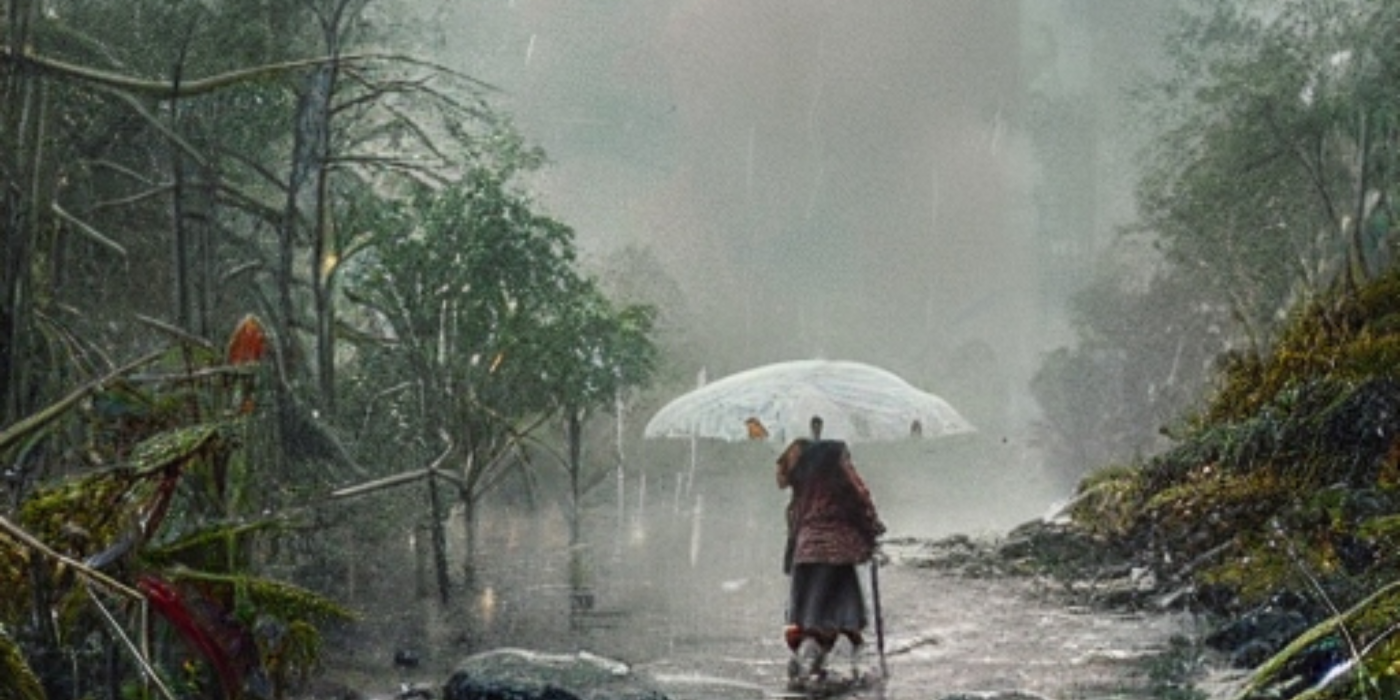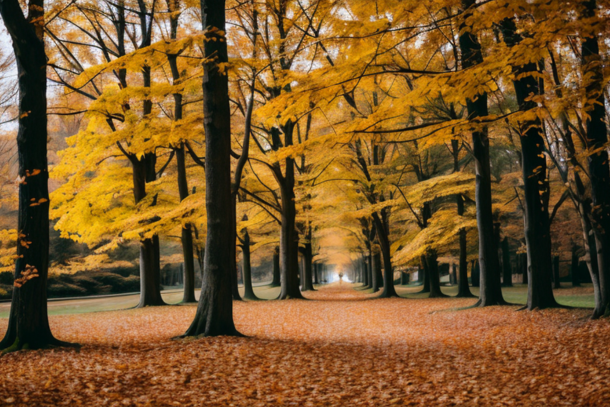Embracing the Elements: Weather Sounds to Help You Sleep - Rain, Wind, Snow, and Storms

Sleep is a fundamental part of our lives that often gets neglected in the hustle and bustle of the modern world. Whether it's due to stress, anxiety, or an overly busy schedule, quality sleep can be elusive for many of us. However, a secret to a good night's rest might be simpler than you think, and it's inspired by nature itself: weather sounds.
The weather sounds like rain, wind, snow, and storms have a unique, calming effect on our minds, helping us relax and dive into a deep, restful sleep. In this blog, we will delve into the world of weather sounds and their impact on sleep quality, so you can fully harness their potential and experience a night of peaceful slumber.
The Science Behind Weather Sounds and Sleep
The idea of falling asleep to the sounds of the rain or a gently whistling wind might seem strange to some, but there is science to back it up. The soothing sounds of nature are considered 'pink noise' - a type of sound that's smoother than 'white noise'. Pink noise includes all frequencies we can hear, but the power per hertz decreases as the frequency increases, creating a balanced, soothing sound that can help improve sleep quality and duration.
Studies show that listening to pink noise can enhance deep sleep and improve memory. It works by reducing brain wave complexity and inducing more stable sleep time, providing us with more restful and regenerative sleep.
Exploring Different Weather Sounds for Sleep
Rain Sounds: A Symphony of Calm for Restful Sleep
One of the most popular weather sounds for inducing restful sleep is the sound of rain. There's something inherently calming about the rhythmic patter of raindrops against a windowpane or on leaves, a melody of nature that has been soothing humans for millennia. But what makes rain sounds so effective for sleep?
Consistency and Variation
The beauty of rain sounds lies in their delicate balance of consistency and variation. The constant, monotonous pattern of rainfall creates a soothing white noise effect that can effectively mask environmental noises. This includes sudden sounds like a car passing by or a dog barking, which can be jarring when you're trying to fall asleep.
On the other hand, rain also provides just enough variation to prevent our brains from tuning it out. Each droplet hits at a slightly different place and time, creating a soothing, natural rhythm. This variation in pitch and tempo holds our subconscious attention just enough to keep our brains engaged, preventing active thoughts from taking over and causing insomnia or restlessness.
Psychological Associations
Rain sounds also trigger certain psychological responses that can aid sleep. In many cultures, rain signifies renewal and tranquillity. It also reminds us of being safe and warm indoors while the rain pours outside, creating a feeling of cosiness and comfort that aids in relaxation and sleep.
Biological Impact
From a more scientific perspective, listening to the sound of rain can also affect our autonomic nervous system, which controls functions like heart rate, breathing, and digestion. The soft, repetitive sound of rainfall can slow down our heart rate and promote deeper breathing, both of which prepare our body for sleep.
Customizability
One of the added advantages of using rain sounds for sleep is their customizability. Different people find different types of rain sounds comforting, and technology today allows us to choose the exact type of rainfall we prefer. Some may prefer the sound of light drizzle, while others might find the sound of a heavy rainstorm more soothing. There's also the sound of rain against different surfaces – from leaves to rooftops to bodies of water.
Harnessing the calming power of rain sounds can be a game-changer for those struggling with sleep issues. The consistency and variation in rain sounds, the psychological associations they carry, their biological impact on our bodies, and the customizability to suit individual preferences make them a versatile and effective tool in promoting restful sleep.
Remember to choose the type of rain sound that resonates most with you, and adjust the volume to a level that is soothing, not distracting. With the right setup, the sound of rain can become your personal lullaby, guiding you into the realm of deep, restful sleep.
Wind Sounds: The Harmonious Whisper for Tranquil Dreams
Wind sounds hold a unique charm when it comes to promoting a good night's sleep. The comforting whispers of the breeze and the rustle of leaves are often associated with peace, tranquillity, and relaxation. The sound of wind, whether it's a gentle zephyr or a robust gust, is a soothing symphony that can aid in ushering a night of deep, restful sleep.
Diverse Soundscapes of Wind
The sound of the wind varies greatly depending on where it's heard and its intensity. The soft rustling of wind passing through a field of wheat can be very different from the majestic gusts whipping across a mountain range. The sonic range offered by wind sounds can thus cater to a variety of personal preferences.
For those who love the sound of a forest, the gentle rustling of leaves or the creaking of branches swaying in the wind can serve as a calming backdrop. This type of wind sound captures the essence of being surrounded by trees and provides a deep connection to nature. It can remind us of a peaceful walk through a verdant forest, helping to alleviate stress and usher in sleep.
For individuals who prefer a more robust and dynamic sound, the sound of wind gusting through a canyon or over a mountain ridge can be a perfect fit. The power and intensity of such wind sounds can create a feeling of awe and remind us of the grandeur of nature. This can help to dwarf everyday worries, encouraging relaxation and a sense of peace that aids in falling asleep.
The Therapeutic Power of Wind Sounds
Wind sounds carry a rhythmic and predictable pattern, a lulling consistency that can help the brain to relax. This rhythm can gently lead our minds away from the stressful thoughts and worries that may keep us awake. This distraction aids in shifting our focus towards relaxation, effectively reducing bedtime anxiety and promoting quicker sleep onset.
Additionally, wind sounds also serve as excellent white noise. They can mask disruptive sounds in the environment such as traffic, loud neighbours, or even a snoring partner, providing a steady sonic backdrop against which these intrusions become less noticeable.
Incorporating Wind Sounds into Your Sleep Routine
There are numerous ways to incorporate wind sounds into your bedtime routine. Sound machines and mobile applications offer a wide variety of wind soundscapes. You can also find a wealth of wind sound recordings online. When choosing your sound source, look for continuous, looped sounds to avoid disruption.
Start by setting a comfortable volume - not too loud, but enough to mask any intrusive background noise. Experiment with different types of wind sounds until you find the one that feels most soothing to you. Remember, what works best can vary from person to person and may even change from night to night.
Snow Sounds: A Gentle Whisper for Peaceful Slumber
Snow sounds are a unique subset of weather sounds that are highly beneficial to achieving a restful night's sleep. The delicate whisper of snowflakes touching the ground, the hushed serenity enveloping a landscape during a snowfall, and the occasional distant crunch of footsteps on fresh snow - these create a soundscape that is truly unique, comforting, and sleep-inducing.
Experiencing Snow Sounds
Listening to snow sounds can be a deeply immersive experience. Imagine each tiny snowflake falling from the sky, touching the ground, and slowly blanketing the world around you in a cloak of tranquil silence. The quietude that comes with a snowfall can be a comforting reassurance of peace, leading you towards deep, restful sleep.
Benefits of Snow Sounds
The softness of snow sounds lies in its subtlety and variation. Unlike the more pronounced sounds of rain or storms, snowfall creates a softer, quieter atmosphere. This muted ambience can be beneficial in a few key ways:
Less Overstimulation: For those who are sensitive to noise, especially during sleep, snow sounds can provide the perfect balance - it's just audible enough to mask disturbing environmental noise but not too loud to cause any distress.
Natural Pink Noise: Snow sounds, like other weather sounds, contribute to the spectrum of natural pink noise. These sounds provide a calming effect, reducing brain wave complexities, and leading to more stable, restorative sleep.
Stress Relief: The peacefulness associated with snow sounds can also contribute to stress and anxiety relief. The quiet tranquility can help to slow your breathing, relax your muscles, and ease your mind - all crucial elements in preparing your body for sleep.
Memory Consolidation: Studies suggest that listening to pink noise, such as snow sounds, during sleep can enhance memory consolidation. This is due to the brain's ability to process and store information during deeper stages of sleep, which these sounds can facilitate.
Final Thoughts on snow sounds to help you sleep
Snow sounds for sleep create a delicate and peaceful soundscape that can transport you to a serene, snow-covered landscape. This auditory experience, rich in its simplicity, may be the key to unlocking deeper and more restorative sleep for you. By integrating these peaceful sounds into your nighttime routine, you may find yourself drifting off to sleep more effortlessly, waking up refreshed, and ready to embrace the day. Remember, the beauty of nature's sounds lies in their diversity, so don't be afraid to explore until you find the perfect match for your peaceful slumber.
Storm Sounds: Unleashing the Power of Thunder for Deep Slumber
Contrary to popular belief, storm sounds - incorporating the rumble of thunder and the crackle of lightning-have found their place in the array of soothing noises that can promote a night of deep, restful sleep. While it may seem paradoxical, the loud and often disruptive nature of a storm can be transformed into a rhythmic, soothing symphony of sounds that lulls many into a tranquil slumber.
The Power of the Thunder
At the heart of storm sounds lies the low, resonating rumble of thunder. Its powerful vibrations roll and echo, creating a form of pink noise that has been shown to aid in inducing sleep. Pink noise is characterized by its balance of high and low frequencies, which the brain perceives as even, steady, and calming.
As the thunder rumbles, the waves of sound it emits are deep, rich, and consistent, with slight variations that prevent monotony. These features make thunder a compelling sound for sleep, working much like a lullaby to coax our minds into a relaxed state.
The Crackling Pulse of Lightning
Lightning's accompanying sounds add an extra dimension to the storm soundscape. The sudden crackle and sizzle might sound alarming initially, but when integrated into the broader symphony of storm noises, it serves to enhance the overall rhythmic pattern that appeals to our subconscious.
Lightning's crackle breaks up the constant rumble of thunder, adding an unexpected element that keeps the brain engaged just enough to listen but not enough to wake or disrupt sleep. It's this balanced blend of predictability and surprise that can help foster a deeper, more restful sleep.
A Caveat: The sound of storms is not for Everyone
While the soothing power of storm sounds is compelling, it is important to remember that these are not universally effective for all individuals. If you have Astraphobia - fear of thunder and lightning - or if violent weather triggers anxiety or unpleasant memories, storm sounds for sleep may not be your ideal choice.
A final word on storms
Nature, in its infinite wisdom, offers a plethora of sounds to help us sleep. Among them, storm sounds hold a unique appeal, turning what is often seen as chaotic and disruptive into a soothing, sleep-inducing melody. The storm, in all its wild and untamed glory, is transformed into a lullaby that can guide us into the realm of dreams.
While the approach is not universally suited to everyone, it invites us to explore the calming potential of weather sounds further and uncovers the ones that resonate most profoundly with our unique needs and preferences. In this quest for better sleep, storm sounds emerge as a surprising yet effective ally, demonstrating that even the most turbulent elements can harbour a soothing calm within their core.
Harnessing weather to help you sleep
Everyone has different preferences when it comes to the sounds that soothe them to sleep. For some, it might be the gentle patter of rain against the window. For others, it might be the howling wind or a soft snowfall. Whatever your preference, these weather sounds provide an effective and natural solution to sleep problems.
Remember, the key is to find the sound that works best for you. Experiment with different weather sounds, volume levels, and durations to discover your perfect sleep solution. As we delve deeper into the importance of sleep, we continue to unearth the profound ways nature can aid us in achieving a restful night. It's time to embrace the elements, and let them guide you into a peaceful slumber.
Are you inspired by this journey through the power of weather sounds? If a friend, family member, or even a random acquaintance springs to mind who might appreciate these sleeping secrets, don't keep it to yourself! Share the tranquillity! Pass this on and together, let's transform the way we sleep, one peaceful night at a time.
Related to this article are the following:
I do hope you have enjoyed this article and hope that you will subscribe to my newsletter so you can get the latest information about all things naturally relaxing.
Stay in touch, join the Naturally Relaxing Newsletter
Newsletter Signup
Post Your Comments
or post as a guest
Be the first to comment.
Latest articles in Relaxation

Capturing the Perfect Sunset: Tips and Techniques

The Benefits of Aromatherapy: Essential Oils for Relaxation

Embracing Calm: Innovative Ways to Relax in the New Year

Autumn Aromatherapy: Essential Oils for Relaxation

Embracing Autumn's Tranquillity: Finding Peace in the UK's Golden Season






